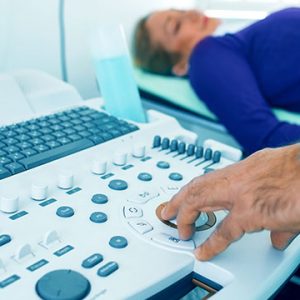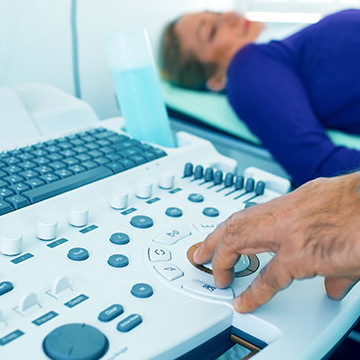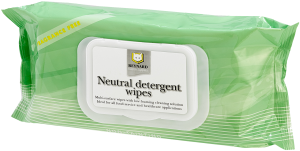About the author
Ruth Barratt is an Infection Prevention and Control Consultant and Health Quality Advisor RN, BSc, MAdvPrac (Hons), CICP-E. Ruth provides advice and training to Reynard Health Supplies concerning the needs of infection prevention and control professionals and developments in the industry.
Ruth originally trained as a registered nurse in the UK but preventing infections has been her specialised field of work in NZ and Australia for over 20 years. She obtained her Masters in Infection Control and Prevention through Griffith University and is currently undertaking a PhD at the University of Sydney – again in the area of infection prevention
There is now clear evidence that contaminated surfaces and equipment in the healthcare setting play a role in the transmission of infection. 
Environmental cleaning is an important infection prevention and control measure, and a required NSQHS Standard practice for healthcare facilities in Australia. The ECRI included ‘Inadequate Cleaning of Complex Reusable Instruments can lead to Infections’ in its
list of Top 10 Patient Safety Hazards for 2017. All equipment will need cleaning and depending on your facility and the use of the equipment, disinfection may also be required. The CDC provides a good overview of the performance characteristics of each type of disinfectant. When choosing a cleaning or disinfection product for a healthcare facility one of the factors taken into consideration is the compatibility of the product with the equipment or surface. Will the product cause surface damage or loss of functionality? Equipment may require repeated, frequent cleaning and/or disinfection, sometimes up to several times a day, such as portable monitors or commodes. It is critical that whatever piece of equipment is purchased, it can be effectively decontaminated in a healthcare environment, without being damaged.
Cleaning products are relatively gentle on surfaces. It is likely that
most healthcare equipment will withstand cleaning with a neutral
detergent. If you already use a detergent cleaning product, check
out the product information.
Disinfection is a little bit trickier as some disinfectants can be more damaging to surfaces. This is particularly the case with medium to high-level disinfectant products and processes. Unfortunately sometimes the resulting damage is not visible but can still affect the functionality of the equipment or the ability to effectively clean it, for example, internal lumen damage to endoscopes caused by certain chemical disinfectants. There is however no standardised method to measure any negative impact caused by chemical products on the surfaces of equipment. This situation has been discussed recently by Tesca et al in an article published in December in the Infection Control Today on-line journal, in which the authors describe a surface testing protocol that they have developed. The authors explain why this is a patient safety problem:
[emph]“It is difficult to predict the clinical impact of surface damage because there is no clear definition of what constitutes surface damage. In theory, surface damage can cause equipment to fail to operate correctly and can shelter microorganisms, thus preventing proper disinfection. Both types of surface damage can create safety risks for patients and staff in healthcare facilities.”[/emph]
The authors go on to explain a set of testing methods for characterising different changes to the surface which may indicate damage. They summarise their protocol as:
[emph]“Using quantitative approaches, changes in roughness, weight or contact angle can be presented as a percent change from the original state”.[/emph]
Therapeutic Goods Administration (TGA)
In March 2017, the Australian Therapeutic Goods Administration (TGA) published a Medical Devices Safety Update (vol. 5, no. 3, May 2017) which contained an article entitled ‘Disinfectants and detergents can damage medical equipment plastics’. This article caused much confusion as one of the statements implied that a common ingredient of detergent wipes was damaging pumps:
[emph]“Detergent wipes used by the hospital to clean the pumps contained the ingredient ‘benzalkonium chloride’. This is classed as a quaternary ammonium compound which is a corrosive ingredient and therefore should not be used.”[/emph]
Clarifications
Following feedback from the wipes market, the TGA updated their article with the following statements:
- The TGA considers cleaning agents that contain levels of benzalkonium chloride below 5-10% are safe to use on medical devices. Disinfectants generally use about 0.5% benzalkonium chloride, which is considered noncorrosive at these levels.
- Benzalkonium chloride is unsafe at a concentration above 10% and therefore should not be used without being diluted.
- Follow the manufacturer’s IFU (instructions for use) regarding the type of disinfectant that can be used on the device.”
To find out more information about your equipment look in the instructions for cleaning and disinfection provided by the manufacturer. If you cannot locate this physically, contact the manufacturer or supplier or search for the piece of equipment on-line. Many larger manufacturers make this this type of information available through the Internet. The instructions for use should list compatible disinfectants for cleaning equipment. Additionally, check with your disinfectant supplier if their products are compatible with various surfaces or common patient equipment.


